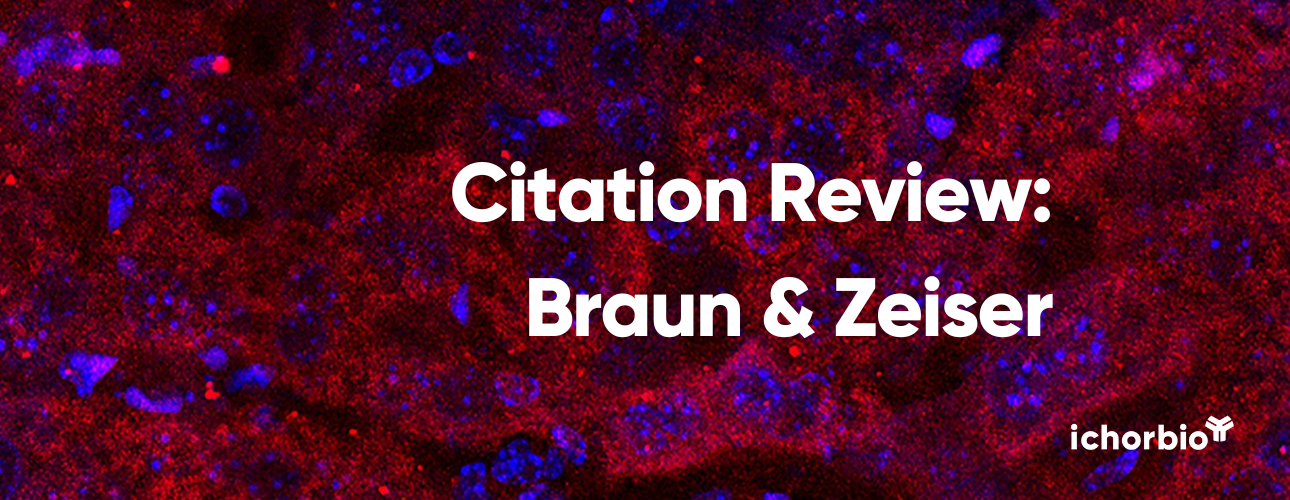Unveiling the Journey of ECP-Treated Splenocytes: A Novel Protocol for Tracking Immunomodulation in Tumor and Colitis Models

Introduction
Immune checkpoint inhibitors (ICIs) have revolutionized cancer therapy, offering remarkable success in many patients. However, their potent immune-activating properties can sometimes lead to severe side effects, notably immune checkpoint inhibitor-induced colitis. This inflammatory condition of the colon can significantly impact a patient's quality of life and even necessitate treatment discontinuation. Extracorporeal photopheresis (ECP), a cell-based immunomodulatory therapy, has emerged as a promising approach to mitigate ICI-induced colitis while preserving the anti-tumor immune response. Despite its clinical efficacy, the precise mechanisms by which ECP exerts its therapeutic effects, particularly the in vivo fate and migration of ECP-treated cells, have remained elusive.
This blog article delves into a groundbreaking protocol from Braun & Zeiser that allows researchers to meticulously trace the organ-specific migration of apoptotic splenocytes treated with ECP in mouse models exhibiting both tumors and ICI-induced colitis. This advancement provides invaluable insights into the immunomodulatory actions of ECP, paving the way for more targeted and effective therapies.
Key Findings from the Paper
The protocol described in the paper presents a sophisticated methodology for studying the in vivo migration and phagocytic uptake of ECP-treated splenocytes. One of the central hypotheses tested was whether ECP-treated splenocytes preferentially migrate to inflamed intestinal tissue while sparing the tumor microenvironment. The findings confirmed this hypothesis, demonstrating a robust infiltration of ECP-treated splenocytes into the inflamed colitis tissue, with minimal presence in the tumor. This differential migration was visually confirmed through ex vivo fluorescence imaging and quantitatively validated by flow cytometry analysis of dissociated colon and tumor tissues.
Furthermore, the research investigated the subsequent fate of these migrating splenocytes, particularly their phagocytic uptake by local antigen-presenting cells (APCs). This is crucial because prior in vitro studies had suggested that phagocytosis of ECP-treated splenocytes by macrophages could induce an immunosuppressive phenotype in these APCs. The in vivo tracking approach now allows for direct investigation of whether this tolerogenic polarization also occurs within the inflamed tissues, offering a deeper understanding of ECP's mechanism of action.
The protocol's ingenuity lies in its use of fluorescently labeled ECP-treated splenocytes from CD45.1 donor mice transferred into CD45.2 recipient mice. This congenic marker system enables clear discrimination between donor (ECP-treated) and recipient immune cells in subsequent organ analysis, allowing for precise tracking of the transferred cells and their interactions within the host's immune system.
Role of ichorbio's antibodies
ichorbio's antibodies played a crucial role in enabling the detailed flow cytometry analysis central to this protocol. Specifically, the following ichorbio antibody was utilized:
- Anti-PD-1 (clone RMP1-14): Cat# ICH1132
This antibody was used for the anti-PD-1 treatment in the mice, which is an integral part of inducing the ICI-associated colitis model. The ability to induce and study ICI-induced colitis is critical for understanding how ECP can mitigate this side effect.
Implications and Future Directions
This protocol holds significant implications for advancing our understanding of ECP therapy and immunomodulation in general. By precisely tracking the in vivo migration and uptake of ECP-treated cells, researchers can unravel the cellular and molecular mechanisms underlying ECP's therapeutic effects in various immune-mediated disorders. The finding that ECP-treated splenocytes preferentially home to inflamed tissue, rather than the tumor, provides a crucial piece of the puzzle regarding ECP's ability to selectively mitigate inflammation without compromising anti-tumor immunity.
In the future, this protocol can be adapted to explore the migration patterns of other cell types or cells treated with different immunomodulatory agents. It also provides a robust framework for investigating the impact of ECP on the functional polarization of phagocytes in vivo, moving beyond in vitro observations. Understanding these dynamics at a granular level can inform the development of next-generation cell therapies and optimize existing ones.
Suggested Future Experiments
Building upon this foundational protocol, several exciting avenues for future research emerge:
- Investigating Phagocyte Polarization In Vivo: Employing the congenic marker system, researchers can now directly assess the phenotypic and functional changes in recipient phagocytes that have internalized ECP-treated donor splenocytes within inflamed intestinal tissue. This could involve sorting phagocytes based on their uptake of fluorescently labeled donor cells and then performing transcriptomic or proteomic analysis to identify immunosuppressive pathways.
- Exploring Different Disease Models: While the current protocol focuses on ICI-induced colitis, it can be readily adapted to study ECP-treated cell migration in other inflammatory or autoimmune disease models, such as inflammatory bowel disease (IBD) or graft-versus-host disease (GvHD).
- Optimizing ECP Treatment Parameters: By varying ECP treatment parameters (e.g., UVA dose, 8-methoxypsoralen concentration), researchers can investigate how these changes impact the apoptotic nature of splenocytes and their subsequent migratory patterns and immunomodulatory effects in vivo.
- Tracking Beyond Splenocytes: The protocol could be modified to track other immune cell populations or even engineered cells that are designed to deliver therapeutic payloads to specific inflamed sites.
- Long-term Fate and Efficacy Correlation: Extending the observation period beyond the current time points (2, 6, and 12 hours) would provide insights into the long-term persistence and fate of ECP-treated splenocytes and correlate their presence with sustained therapeutic effects.
Conclusion
The protocol outlined in this paper marks a significant step forward in our ability to understand the complex interplay between ECP therapy and the immune system. By providing a detailed roadmap for tracking ECP-treated splenocytes in vivo, this research not only sheds light on the mechanisms underlying ECP's beneficial effects in ICI-induced colitis but also opens doors for a myriad of future investigations. These insights are vital for refining current immunomodulatory strategies and developing novel cell-based therapies that precisely target inflammation while preserving crucial immune functions.
Reference
Lukas M. Braun, Robert Zeiser. Protocol to study in vivo organ-specific migration of apoptotic splenocytes in mice with tumor and immune checkpoint inhibitor-induced colitis,
STAR Protocols. Volume 6, Issue 2, 2025, 103878, ISSN 2666-1667, https://doi.org/10.1016/j.xpro.2025.103878.

